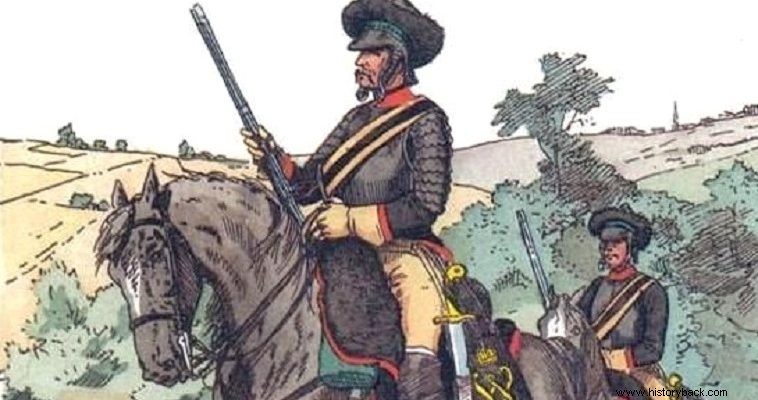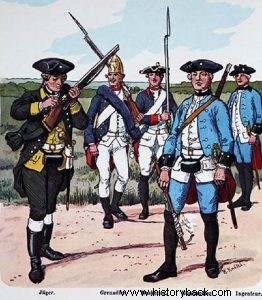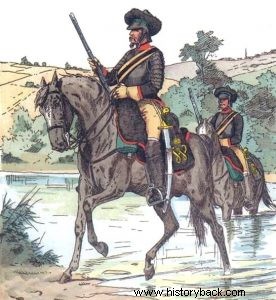
The state of Schauburg-Lippe was one of hundreds of small German states that made up the Holy Roman Empire of the German Nation. During the Seven Years' War (1756-63), a truly global conflict, the small powers of the state sided with Prussia and its glorious king, Frederick the Great. Governor Count William inherited just one company of grenadier-guards from his father. This was the entire army of the state!
The Schauburg Lippe Infantry Regiment
But soon the new governor decided to increase his army. The single company was formed into a battalion with four companies, while in 1756 the battalion had one company of grenadiers and four companies of musketeers. In 1757 the battalion became a regiment with two battalions, each with one company of grenadiers, three companies of musketeers and one company of cavalry. In 1760 each company was also reinforced with a light cannon. Honorary commander was the count himself, but command in the field was exercised by Colonel von Behm. On April 24, 1757 the regiment joined the allied army (British, Hanoverian, Hessian) fighting against Prussia's French rivals in West Germany.
He received his baptism of fire in the battle of Hastenbeck. He particularly distinguished himself in the Battle of Krefeld (1758) by crushing the French attacks as a breakwater. In the same year he took part in the unfortunate for the Allies battle of Luterberg and again distinguished himself by performing rearguard duties during the retreat, repelling every enemy attack. In 1759 he fought in the famous battle of Minden where the allies state by state defeated the French, but due to British failure they did not crush them, as they could. The regiment also fought in the Battle of Fellinghausen (1761) and Wichelmstal (1762).
The famous Carabinieri and the Hunters of Schauburg Lippe
The "corps" of the Carabinieri was formed in 1753. It consisted of 75 horsemen and 50 foot skirmishers. The horsemen were heavily equipped. They brought breastplates that covered the whole torso and arms, swords, a short-barreled musket (carbine) and two pistols. Later the horsemen's strength was doubled. Although small in numerical strength the corps wrote its own history and its men had a reputation as fierce and merciless warriors who took no prisoners... The corps fought at the Battle of Hastenbeck, 1757, but particularly distinguished itself at Mere, 1758, when just 40 of its men repulsed a strong French charge. The company of Hunters was originally attached to the Carabinieri, as mentioned. But later it became an independent unit and fought with distinction in 11 small and large battles.
Artillery – Engineering
In 1752 the state artillery was established. At that time, the engineering men also joined the artillery. The head of the engineer was Captain Remer who was considered one of the best of the time in Europe. The artillery originally had a strength of 109 men but with the outbreak of the Seven Years' War its strength was increased to 400 men. It had 29 light 3-pounder guns, 4 8-pounder guns, 2 heavy 12-pounder guns, 3 heavy 18-pounder guns, 3 howitzers and four howitzers. At the battle of Luteberg a ulama with 28 gunners and 2 guns fought to the last. All the men fell fighting in their cannons.

Hunter, grenadier, musketeer, gunner, pioneer of Lippe.

The famous "black carabinieri" of Lipe.
